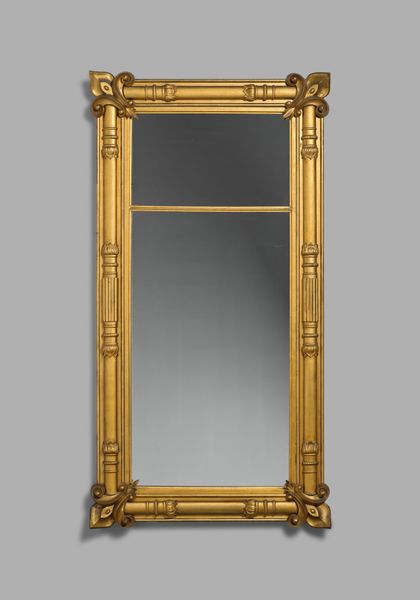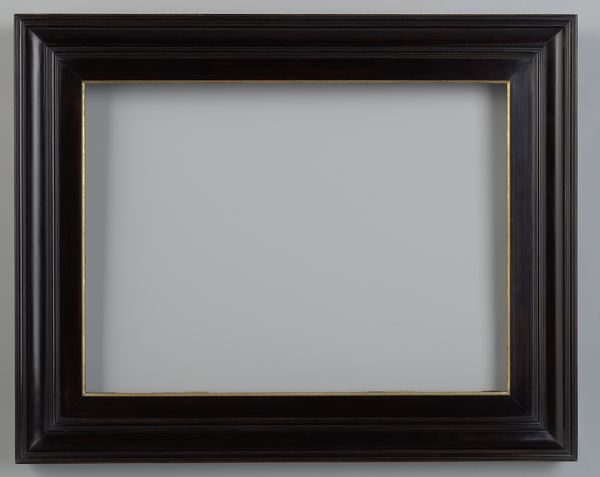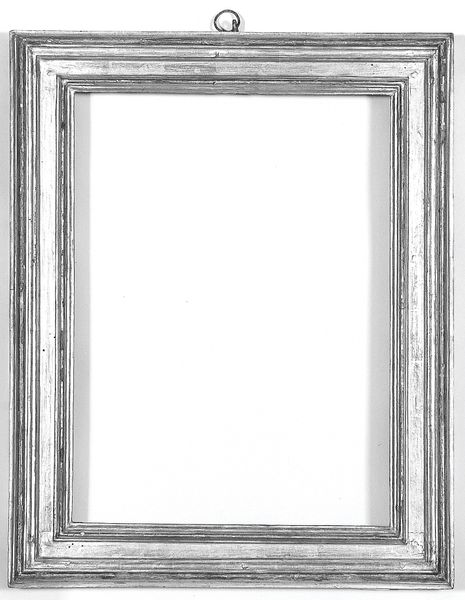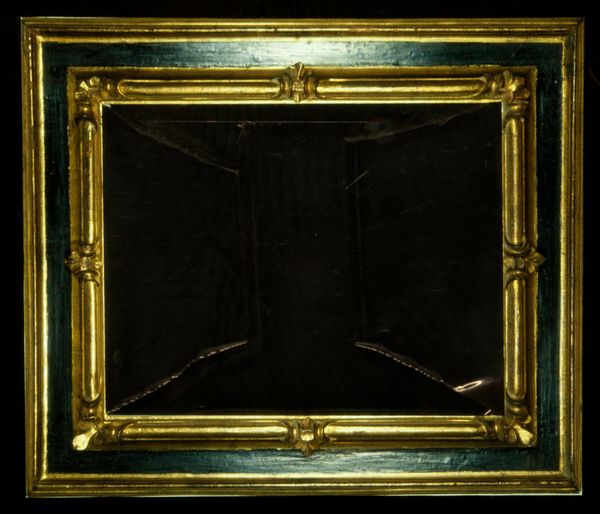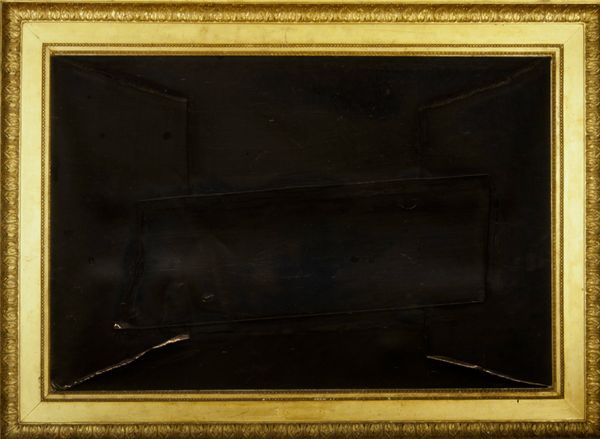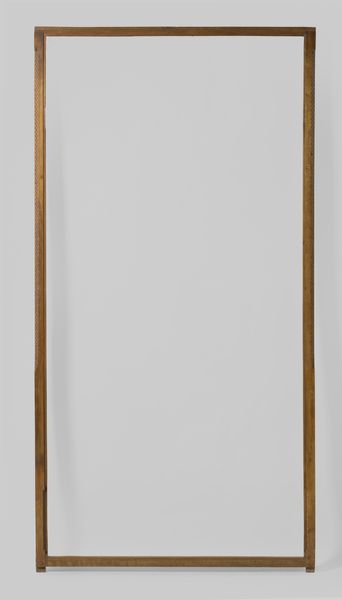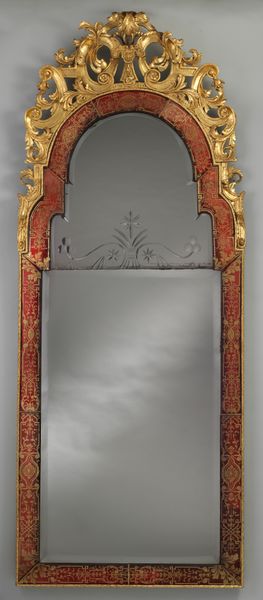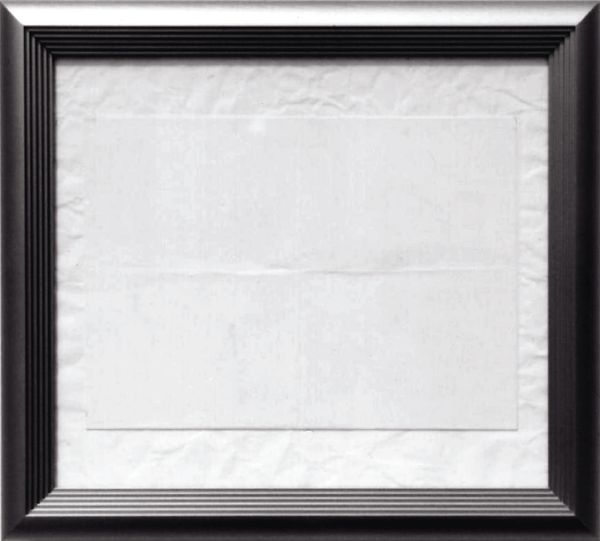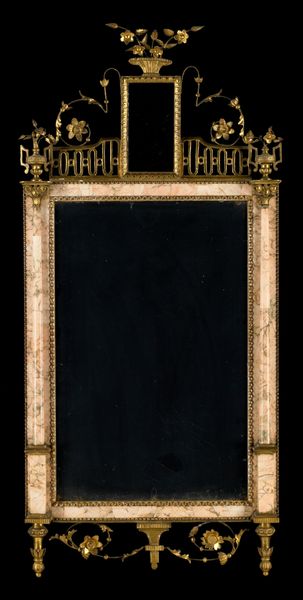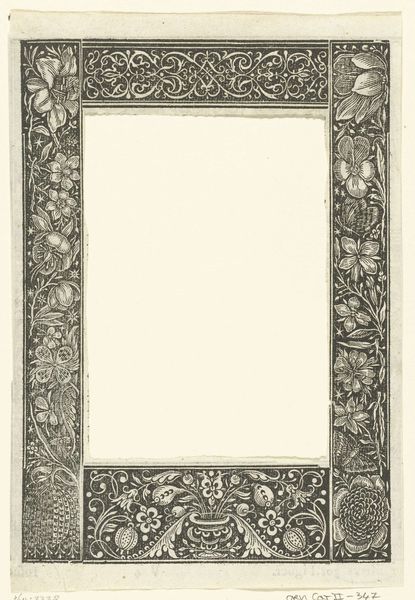
carving, guilding, wood
#
carving
#
baroque
#
guilding
#
form
#
wood
#
decorative-art
Dimensions: Overall: 30 11/16 × 25 13/16 in. (78 × 65.5 cm) Sight: 23 5/8 × 17 7/8 in. (60 × 45.4 cm) Rabbet: 24 1/8 × 18 7/16 in. (61.2 × 46.8 cm)
Copyright: Public Domain
This reverse ogee frame was crafted in Naples, Italy, likely between 1640 and 1680, by an unknown artisan. Made of wood, it's decorated with delicate carvings and finished with gold leaf over a red bole, or clay layer. Gilding is an ancient craft, achieved by meticulously applying thin sheets of gold to an adhesive surface. The deep red under the gold leaf warms the overall appearance, giving it a rich glow. Notice the repetitive, stylized leaf motifs – these likely weren't created by a single artist, but through a workshop system. Here, skilled laborers specialized in specific tasks, like carving, gilding, or finishing. Frames like these weren't just decorative; they were integral to the viewing experience of paintings. They mediated between the artwork and its environment, adding value and prestige. The frame is a testament to the skilled labor and collaborative processes behind even seemingly simple objects, blurring the lines between craft, art, and the socio-economic context of their creation.
Comments
No comments
Be the first to comment and join the conversation on the ultimate creative platform.


